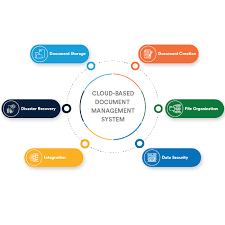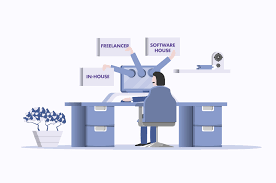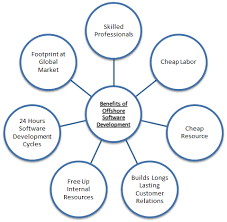Navigating Success: The Role of IT Consulting Business in Today’s Digital Landscape
The Role of IT Consulting Businesses in Today’s Digital World
In today’s fast-paced and ever-evolving digital landscape, businesses are constantly seeking ways to leverage technology to gain a competitive edge. This is where IT consulting businesses play a crucial role.
IT consulting firms provide expert advice and guidance to organizations looking to optimize their IT infrastructure, streamline processes, enhance security measures, and implement new technologies effectively. These firms bring a wealth of knowledge and experience to the table, helping businesses navigate the complexities of the digital realm.
Key Services Offered by IT Consulting Businesses
IT consulting businesses offer a wide range of services tailored to meet the unique needs of each client. Some of the key services include:
- IT Strategy Development: Helping businesses align their IT strategies with their overall business goals.
- Infrastructure Assessment: Evaluating existing IT infrastructure to identify areas for improvement and optimization.
- Cybersecurity Consulting: Implementing robust security measures to protect against cyber threats and data breaches.
- Cloud Computing Solutions: Assisting businesses in migrating to cloud-based systems for increased efficiency and scalability.
- Software Development: Creating custom software solutions tailored to meet specific business requirements.
The Benefits of Engaging an IT Consulting Firm
By partnering with an IT consulting business, organizations can benefit in several ways:
- Expertise: Access to a team of skilled professionals with specialized knowledge in various areas of technology.
- Cost-Effectiveness: Avoiding costly mistakes by implementing solutions that are tailored to the organization’s needs.
- Innovation: Staying ahead of the curve by leveraging the latest technologies and trends in the industry.
- Risk Mitigation: Minimizing security risks and ensuring compliance with industry regulations through proactive measures.
In conclusion, IT consulting businesses play a vital role in helping organizations harness the power of technology for growth and success. By leveraging their expertise and guidance, businesses can navigate the complexities of the digital landscape with confidence and achieve their strategic objectives effectively.
9 Key Advantages of IT Consulting for Business Growth and Innovation
- Access to specialized expertise in various areas of technology
- Cost-effective solutions tailored to the organization’s needs
- Innovative strategies to stay ahead of industry trends
- Efficient implementation of new technologies and processes
- Improved cybersecurity measures to protect against threats
- Enhanced scalability and flexibility through cloud computing solutions
- Custom software development for specific business requirements
- Proactive risk mitigation and compliance with industry regulations
- Expert guidance for optimizing IT infrastructure and processes
6 Drawbacks of IT Consulting: Costs, Dependency, and More
- High Cost
- Dependency
- Lack of Control
- Confidentiality Concerns
- Skill Mismatch
- Communication Challenges
Access to specialized expertise in various areas of technology
Access to specialized expertise in various areas of technology is a key advantage of engaging an IT consulting business. These firms bring a diverse team of skilled professionals with in-depth knowledge in fields such as cybersecurity, cloud computing, software development, and more. By tapping into this specialized expertise, organizations can benefit from tailored solutions that address their specific technological needs effectively. This access to a breadth of knowledge ensures that businesses stay ahead of the curve and leverage the latest advancements in technology to drive innovation and achieve their strategic goals.
Cost-effective solutions tailored to the organization’s needs
One significant advantage of engaging an IT consulting business is the provision of cost-effective solutions that are customized to meet the specific needs of the organization. By tailoring IT solutions to align with the organization’s requirements, businesses can avoid unnecessary expenses associated with generic or one-size-fits-all approaches. This personalized approach not only helps in optimizing the use of resources but also ensures that the implemented solutions are efficient and relevant, ultimately leading to improved operational effectiveness and cost savings in the long run.
Innovative strategies to stay ahead of industry trends
IT consulting businesses offer a valuable pro by providing innovative strategies to help organizations stay ahead of industry trends. By leveraging their expertise and in-depth knowledge of the latest technologies, IT consultants can guide businesses in adopting cutting-edge solutions that give them a competitive edge. These innovative strategies not only help companies adapt to changing market dynamics but also position them as industry leaders, driving growth and success in today’s fast-paced digital world.
Efficient implementation of new technologies and processes
IT consulting businesses excel in the efficient implementation of new technologies and processes for organizations. By leveraging their expertise and experience, these firms can seamlessly integrate cutting-edge technologies into existing systems, ensuring a smooth transition and minimal disruption to operations. This proactive approach not only accelerates the adoption of innovative solutions but also enhances overall efficiency, productivity, and competitiveness within the organization.
Improved cybersecurity measures to protect against threats
In today’s increasingly digital world, one significant advantage of engaging an IT consulting business is the enhancement of cybersecurity measures to safeguard against evolving cyber threats. These firms bring specialized expertise in implementing robust security protocols, conducting risk assessments, and staying abreast of the latest cybersecurity trends. By leveraging their knowledge and experience, organizations can fortify their defenses, mitigate potential risks, and ensure the protection of sensitive data from malicious actors.
Enhanced scalability and flexibility through cloud computing solutions
IT consulting businesses offer enhanced scalability and flexibility through cloud computing solutions, enabling organizations to adapt to changing business needs with ease. By leveraging cloud technologies, businesses can scale their IT resources up or down based on demand, ensuring optimal performance and cost-efficiency. Cloud solutions also provide the flexibility to access data and applications from anywhere, empowering employees to work remotely and collaborate seamlessly. This pro of IT consulting services not only enhances operational efficiency but also future-proofs businesses by enabling them to embrace growth opportunities without being limited by traditional IT infrastructure constraints.
Custom software development for specific business requirements
Custom software development tailored to specific business requirements is a significant advantage offered by IT consulting businesses. By creating bespoke solutions, these firms enable organizations to address unique challenges and streamline processes effectively. This personalized approach ensures that the software aligns perfectly with the company’s operations, enhancing efficiency, productivity, and overall performance. With custom software development, businesses can optimize their workflows, improve decision-making processes, and gain a competitive edge in their industry.
Proactive risk mitigation and compliance with industry regulations
One significant advantage of engaging an IT consulting business is their proactive approach to risk mitigation and ensuring compliance with industry regulations. These firms have the expertise to identify potential security threats and vulnerabilities in a company’s IT infrastructure before they escalate into major issues. By implementing robust security measures and staying up-to-date on regulatory requirements, IT consulting businesses help organizations minimize risks, protect sensitive data, and maintain adherence to industry standards, ultimately fostering a secure and compliant operating environment.
Expert guidance for optimizing IT infrastructure and processes
IT consulting businesses offer expert guidance for optimizing IT infrastructure and processes, ensuring that organizations can maximize efficiency and performance in their technological operations. By leveraging the knowledge and experience of IT consultants, businesses can identify areas for improvement, streamline workflows, and implement best practices to enhance overall productivity. This proactive approach not only helps businesses operate more effectively but also positions them for future growth and success in an increasingly digital world.
High Cost
One significant drawback of IT consulting services is the high cost associated with them, which can pose a challenge for small businesses operating on limited budgets. The fees charged by IT consulting firms for their expertise and services can be substantial, making it difficult for smaller enterprises to afford the level of support they may require to optimize their IT infrastructure. This financial barrier may prevent some businesses from accessing the valuable guidance and solutions that IT consultants can offer, potentially hindering their ability to compete effectively in today’s digital market.
Dependency
One significant con of engaging IT consulting businesses is the risk of dependency. Businesses may become overly reliant on IT consultants, which can impact their ability to make independent decisions regarding their IT infrastructure and technology strategies. This dependency can lead to a lack of in-house expertise and ownership of critical IT processes, potentially limiting the organization’s agility and autonomy in adapting to changing technology needs. It is essential for businesses to strike a balance between leveraging external expertise and maintaining internal capabilities to ensure long-term sustainability and strategic decision-making.
Lack of Control
Outsourcing IT consulting services can present a significant drawback in the form of a lack of control over crucial technology decisions and implementations. When businesses rely on external consultants for their IT needs, they may find themselves in a position where they have limited influence over the direction of their technology strategies. This loss of control can lead to potential misalignment with business objectives and a disconnect between the desired outcomes and the implemented solutions. Organizations must carefully weigh this con against the benefits of expertise and efficiency that IT consulting firms offer to ensure that they maintain a balance between external support and internal autonomy in their technology initiatives.
Confidentiality Concerns
Confidentiality concerns represent a significant con of engaging IT consulting businesses. Sharing sensitive business information with external consultants can potentially lead to confidentiality breaches and raise concerns about the protection of proprietary data. Organizations may feel hesitant to disclose critical details about their operations, strategies, or technologies, fearing the risk of unauthorized access or data leaks. Maintaining strict confidentiality protocols and ensuring trustworthiness in handling sensitive information are crucial aspects that both IT consulting firms and their clients must address to mitigate these risks effectively.
Skill Mismatch
Skill Mismatch can be a significant con of IT consulting businesses, as the expertise of IT consultants may not always align perfectly with the specific needs or goals of a business. This mismatch can lead to inefficiencies, misunderstandings, and potential roadblocks in implementing effective solutions. It is crucial for businesses to thoroughly assess the capabilities and experience of IT consultants before engaging their services to ensure that they possess the necessary skills to address the unique challenges faced by the organization.
Communication Challenges
Communication challenges represent a significant drawback of IT consulting businesses. Misunderstandings or miscommunication between the consulting firm and the client can result in inefficiencies and project delays. When there is a lack of clear and effective communication, it can lead to discrepancies in expectations, objectives, or deliverables, hindering the overall progress and success of the project. Addressing these communication challenges is essential to ensure that both parties are aligned and working towards the same goals for a smooth and productive collaboration.











